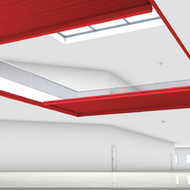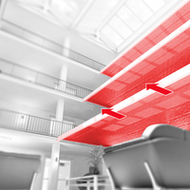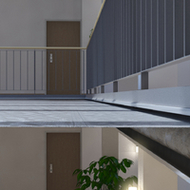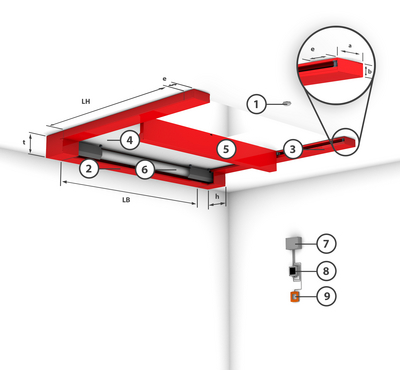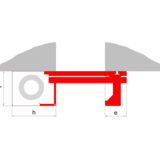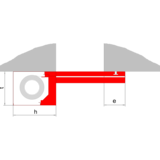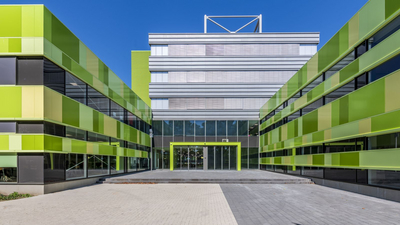
Product description
In the event of an alarm, a room-enclosing or radiation-reducing textile fire protection closure that closes by means of an electric motor in a horizontal installation position and closing direction.

Type | radiation-reducing, room-enclosing fire protection closure of textile design |
Verification | CE marking according to hEN 16034 : 2014 in conjunction with hEN 13241 : 2003+A2 : 2016 |
Closing direction | horizontal |
Fire resistance | E 120 • EW 90 • tested according to EN 1634-1 : 2014-03 • classified according to EN 13501-2 : 2016-12 |
Closing cycles | C • C1 • tested according to EN 12605 : 2000-08 • classified according to EN 13501-2 : 2016-12 |
Durability | C1 for 1-part systems up to size 5000 x 5000 mm for EW60 or 6000 x 6500 mm for E120 and EW30 • C for 2-part systems up to size 9400 x 18800 mm for E120 and EW60 or 6800 x 4270 mm for EW90 |
Environmental conditions | In the event of a fire, the falling of ceiling parts in the area of the the area of the soffit by suitable on-site measures on the part of the customer. Not taken into account are special environmental conditions (for example Humidity >80%, ambient t • Special environmental conditions are not taken into account (e.g. humidity > 80 %, ambient temperature < 5 °C and > 45 °C, wind loads etc.). |
Downloads
Classification | Size | Type | Fabric | Wall Thickness | Housing (d x h) | Guide Rail |
|---|---|---|---|---|---|---|
E 120 | 6000 x 6500 | 1-tlg | Heliotex 120 | 300 | 235 x 320 | 200 x 80 |
EW 30 | 6000 x 6500 | 1-tlg | Heliotex 120 | 300 | 235 x 320 | 200 x 80 |
EW 60 | 5000 x 5000 | 1-tlg | Heliotex 120 | 300 | 235 x 320 | 200 x 80 |
E 120 | 9400 x 18800 | 2-tlg | Heliotex 120 | 300 | 400 x 610 | 300 x 150 |
EW 60 | 9400 x 18800 | 2-tlg | Heliotex 120 | 300 | 400 x 610 | 300 x 150 |
EW 90 | 6800 x 4270 | 2-tlg | Heliotex 120 | 300 | 400 x 610 | 300 x 150 |
References

